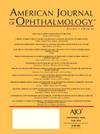人工晶状体——以个人和企业专利创新衡量的太平盛世。
IF 4.1
1区 医学
Q1 OPHTHALMOLOGY
引用次数: 0
摘要
目的:探讨个人和企业对人工晶状体(iol)专利设计的贡献。观点:1950 - 2000年IOL专利的历史回顾和分析。方法:从国际知识产权数据库中获取每年授予个人和公司的人工晶体专利数量。从1950年到2000年,美国和国际上发布的专利趋势与镜片使用情况进行了比较。专利趋势与美国食品和药物管理局(FDA)从1978年到2000年批准的商业营销镜片进行了比较。结果:从1970年到2000年,美国授予了855项人工晶状体专利,远高于同期国际上颁发的316项专利。在美国,授予个人的专利仅比授予公司的专利少6%(404项比430项);只有2.5%(21人)被授予大学。从1989年开始,专利权的数量发生了明显的转变,由个人转为公司。结论:美国在人工晶状体设计中发挥了主导作用,将专利作为人工晶状体发展的创造力的替代品。当FDA被授权将iol归类为III类医疗器械时,iol的专利首次增加,而1989年后,大多数所有权从个人转移到公司。可申请专利的晶状体创新几乎同时上升,人工晶状体手术成熟到护理标准,这表明这两种现象都是早期变革事件的产物。本文章由计算机程序翻译,如有差异,请以英文原文为准。
Artificial Intraocular Lenses―the Halcyon Years as Measured by Individual and Corporate Patentable Innovations
Purpose
To explore the contributions of individuals and corporate manufacturers to the design of artificial intraocular lenses (IOLs) conferred through patents.
Perspective
Historical review and analysis of IOL patents from 1950 through 2000.
Methods
The annual number of IOL patents granted to individuals and companies was obtained from an international database on intellectual property. Trends in patents issued in the United States and internationally were compared with lens use from 1950 through 2000. Patent trends were compared with lenses approved for commercial marketing by the Food and Drug Administration (FDA) from 1978 through 2000.
Results
From 1970 through 2000, the United States granted 855 patents for IOLs, far greater than the 316 patents issued internationally during the same period. Patents in the United States granted to individuals were merely 6% less than those issued to companies (404 vs 430); only 2.5% (21) were conferred to universities. Beginning in 1989, there was a marked shift in the number of patent rights to corporations rather than individuals.
Conclusions
Using patents as a surrogate for creativity in IOL development, the United States played a leading role in artificial lens design. Patents for IOLs first increased when the FDA was authorized to classify them as Class III medical devices, whereas the majority of ownerships shifted from individuals to companies after 1989. The near simultaneous rise in patentable lens innovations with IOL surgery maturating to the standard of care suggests both phenomena were products of earlier transformative events.
求助全文
通过发布文献求助,成功后即可免费获取论文全文。
去求助
来源期刊
CiteScore
9.20
自引率
7.10%
发文量
406
审稿时长
36 days
期刊介绍:
The American Journal of Ophthalmology is a peer-reviewed, scientific publication that welcomes the submission of original, previously unpublished manuscripts directed to ophthalmologists and visual science specialists describing clinical investigations, clinical observations, and clinically relevant laboratory investigations. Published monthly since 1884, the full text of the American Journal of Ophthalmology and supplementary material are also presented online at www.AJO.com and on ScienceDirect.
The American Journal of Ophthalmology publishes Full-Length Articles, Perspectives, Editorials, Correspondences, Books Reports and Announcements. Brief Reports and Case Reports are no longer published. We recommend submitting Brief Reports and Case Reports to our companion publication, the American Journal of Ophthalmology Case Reports.
Manuscripts are accepted with the understanding that they have not been and will not be published elsewhere substantially in any format, and that there are no ethical problems with the content or data collection. Authors may be requested to produce the data upon which the manuscript is based and to answer expeditiously any questions about the manuscript or its authors.

 求助内容:
求助内容: 应助结果提醒方式:
应助结果提醒方式:


